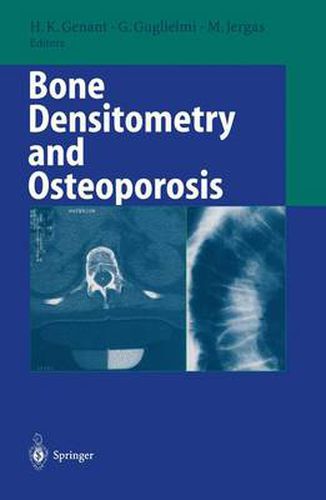Readings Newsletter
Become a Readings Member to make your shopping experience even easier.
Sign in or sign up for free!
You’re not far away from qualifying for FREE standard shipping within Australia
You’ve qualified for FREE standard shipping within Australia
The cart is loading…






This title is printed to order. This book may have been self-published. If so, we cannot guarantee the quality of the content. In the main most books will have gone through the editing process however some may not. We therefore suggest that you be aware of this before ordering this book. If in doubt check either the author or publisher’s details as we are unable to accept any returns unless they are faulty. Please contact us if you have any questions.
The diagnosis of osteoporosis and the determination of fracture risk has always been a challenge for radiologists, epidemiologists, and clinicians as well as oth er researchers and health care professionals working in the field. It is bone min eral density that is closely related to bone fragility, and the advent of techniques to quantitatively assess bone density has been welcomed. It has reduced the sub jectivity inherent to conventional radiologic assessment of osteoporosis. The on going technical process has made various techJ)iques to assess bone density wide ly available. However, these measurement techniques have also incurred some crit icism because bone densitometry has sometimes been applied without specific indications and without appropriate clinical ramifications. The purpose of this text is to provide a perspective on the current status of bone densitometry and ist relevance to osteoporosis diagnosis and management. Therefore, this book will give the reader an introduction to the nature of osteo porosis, its pathophysiology and epidemiology, and the clinical consequences of performing bone densitometry. Aside from standard bone densitometry, newer technologies such as quantitative ultrasound techniques, magnetic resonance imaging and bone structure analysis are discussed in the context of diagnosing osteoporosis.
$9.00 standard shipping within Australia
FREE standard shipping within Australia for orders over $100.00
Express & International shipping calculated at checkout
This title is printed to order. This book may have been self-published. If so, we cannot guarantee the quality of the content. In the main most books will have gone through the editing process however some may not. We therefore suggest that you be aware of this before ordering this book. If in doubt check either the author or publisher’s details as we are unable to accept any returns unless they are faulty. Please contact us if you have any questions.
The diagnosis of osteoporosis and the determination of fracture risk has always been a challenge for radiologists, epidemiologists, and clinicians as well as oth er researchers and health care professionals working in the field. It is bone min eral density that is closely related to bone fragility, and the advent of techniques to quantitatively assess bone density has been welcomed. It has reduced the sub jectivity inherent to conventional radiologic assessment of osteoporosis. The on going technical process has made various techJ)iques to assess bone density wide ly available. However, these measurement techniques have also incurred some crit icism because bone densitometry has sometimes been applied without specific indications and without appropriate clinical ramifications. The purpose of this text is to provide a perspective on the current status of bone densitometry and ist relevance to osteoporosis diagnosis and management. Therefore, this book will give the reader an introduction to the nature of osteo porosis, its pathophysiology and epidemiology, and the clinical consequences of performing bone densitometry. Aside from standard bone densitometry, newer technologies such as quantitative ultrasound techniques, magnetic resonance imaging and bone structure analysis are discussed in the context of diagnosing osteoporosis.